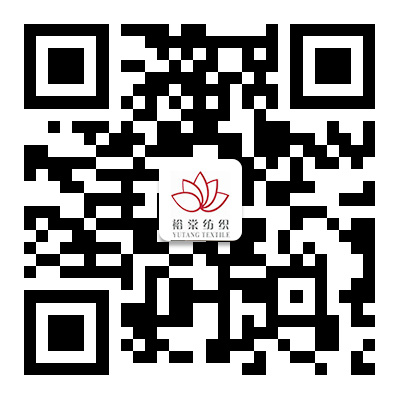Of all the fabric fibers, you thought spandex was the only one that was elastic?
Time of Release:
2022-11-21 10:20
source:
sohu
Elastic fiber is an essential material in our life. Without it, there would be no women's stockings, no summer bathing suits, no body-flattering tights... It can be said that elastic fiber has made an indelible contribution to show human figure and enjoy the comfort of dressing.
The elastic fiber we often see in the composition of clothing is called spandex. It's not a lot, but it's important. Here is a shopping tip to share with you:
When shopping online, check the ingredient label of the clothes. If you see the spandex, you can generally know that the clothes have slimming effect and can feel slightly tight. Without elastic fiber clothes, generally it is necessary to buy a little loose, can not be too close, otherwise it will hinder normal activities. Isn't that useful?
But if you think spandex is the only elastic fiber, think again. We textile people diligently research and develop new fibers, new technology, and strive to contribute more to the cause of human clothing... (seems to say far again ~~ hurry back)
According to the definition given by ASTM: elastic filament at room temperature, the material is repeatedly stretched to at least 2 times its original length, and after the tension release, can quickly recover to the original length of a type of fiber, the following 6 kinds of fiber can be called elastic fiber.
Diene elastic fiber (rubber filament)
Diene elastic fiber commonly known as rubber or rubber wire, elongation is generally between 100 %~300 %. The main chemical composition is sulfide polyisoprene, has good high temperature resistance, acid and alkali resistance, wear resistance and other chemical and physical properties, widely used in socks, rib cuffs and other knitting industry.
Rubber silk is an early used elastic fiber, because it is mainly made into thick yarns, so its use in the weaving of fabrics is very limited.
Polyurethane fiber (spandex)
Polyurethane elastic fiber is a copolymer made of polyurethane as the main component of block copolymer, our country is referred to as Spandex, the initial commodity name in the United States, then it is renamed Lycra, Elastane in Europe, Neolon in Japan, and Dorlastan in Germany.
Its elasticity comes from a block copolymer network of "soft" and "hard" chain segments. With the different block copolymers, the spinning process is different, and the elastic and dyeing properties of the fibers are different after the formation of different "segment" network structures.
Polyether ester elastic fiber
Polyether ester elastic fiber is an elastic fiber made from polyester and polyether copolymer by melt spinning, which was first produced in 1990 by Japanese Emperor Company. Polyether ester elastic fiber is not only high strength, elasticity is also very good, at 50% elongation, the elasticity of medium strength elastic fiber has been comparable to spandex, the melting point is also high, and PET fiber blended, can be dyed at 120℃~130 ℃, so polyester fiber can also be processed into elastic textiles. In addition, their excellent light resistance, chlorine bleaching resistance, acid and alkali resistance are better than ordinary spandex. Because of its good acid and alkaline resistance, the fabric composed of it and polyester can also be alkali reduction processing to improve the drape of the fabric.
This kind of fiber also has the advantages of cheap raw materials, easy production and processing, which is a kind of promising fiber.
Polyolefin elastic fiber
Polyolefin elastic fibers are prepared from polyene thermoplastic elastomers by melt spinning. Launched by DOW Chemical in 2002, XLA is the first commercial polyolefin elastic fiber, which is prepared by melt spinning of in situ polymerized ethylene-octene copolymer (POE) catalyzed by metallocene catalyst. It has good elasticity, 500% fracture elongation, resistance to high temperature of 220℃, chlorine bleaching and strong acid and alkali treatment, and has a strong resistance to UV degradation. Its production process is relatively simple, the raw material price is lower than spandex, and there is almost no pollution in the production process and it is easy to recycle.
Polyolefin elastic fibers are widely used in recent years because of their excellent properties.
Composite elastic fibre
CONTEX (ST 100 composite elastic fiber, collectively referred to as T400 elastic fiber in the market) is a new two-component composite elastic fiber made by advanced composite spinning process with common PET and DuPont Sorona as the main raw material. With natural permanent spiral curling and excellent leavening, elasticity, elastic recovery rate, color fastness and special soft hand feel, it can be pure woven alone or interwoven with cotton, viscose fiber, polyester, nylon, etc., forming a variety of styles.
It not only solves many problems of traditional spandex filament, such as not easy to dye, excessive elasticity, complex weaving, unstable fabric size, and easy aging in the process of use, but also can be woven directly on the air-jet, water-jet and arrow loom. It does not need to be made into covering yarn before weaving like spandex, which reduces the cost of yarn and improves the quality uniformity of products.
Hard elastic fibre
The elastic fibers mentioned above belong to soft elastic fibers, which have large deformation and recovery under low stress. From the perspective of thermodynamics, elasticity comes from the degree of freedom (or disorder) of the molecular chain, that is, the change in the entropy of the system, so the above fibers have very low crystallinity. However, some fibers made under special processing conditions, such as polypropylene (PP), polyethylene (PE) and other fibers, although not easy to deform under low stress (because they have a higher modulus), but also have better elasticity under higher stress, especially at low temperature, so this kind of fiber is called hard elastic fiber.
The deformation and recovery of hard elastic fibers are obviously different from those of elastic fibers. For example, when the hard elastic PP fiber is stretched for a second time immediately after the stretching recovery, its modulus and strength will decrease a lot. However, if it is placed for a period of time after the stress is removed, or if it is stretched for a second time after the temperature is raised to relax it fully, its deformation recovery is basically close to the curve of the first time. This is because when the hard elastic fiber is stretched and recovered, not only the stretching and retracting deformation of the long chain segment of the soft elastic fiber shrinking molecule mentioned above occurs, but also some changes of micropore structure and the structure of their wafer network also occur during the stretching process. Only after these structural changes gradually recover, can they return to the original state, so they deformation recovery under higher pressure, known as hard elastic fibers.
At present, hard elastic fiber is not used much in textiles, but because its elastic characteristics are different from soft elastic fiber, some special textiles can be developed.
The previous page
The next page
In Related News
Spandex coated yarn is spandex cored yarn. Spandex has good elasticity, but poor wear resistance, so it is used as core yarn, and then spun into core-spun yarn or wrapped yarn with other types of fibers. Other fibers can be cotton, chemical fiber, etc
Spinning process of spandex coated yarn
In the spinning process, SpandexStretch is an important process parameter, which affects the elasticity of CoveredYarn and fabric,
The main classification of spandex
(1) Conventional spandex filament: It is a new type of fiber with many excellent textile properties, with good elasticity and elastic recovery rate, fine size, high strength, small specific proportion, excellent dyeing and fastness, etc.
-
-
-
-
-
-

Mobile QR code
-
Contact Number:
Email:hong@zjyttex.com
Address: South Floor 4, No.5, Innovation Road, Qianjiang Industrial Park,
Dingqiao Town, Haining City, Zhejiang Province
Zhejiang Yutang Textile Co., LTD
Copyright©2022Zhejiang Yutang Textile Co., LTD. All rights reserved. 浙ICP备2022029865号-1










